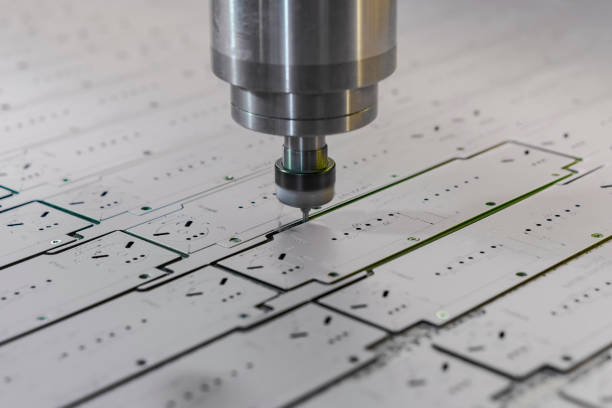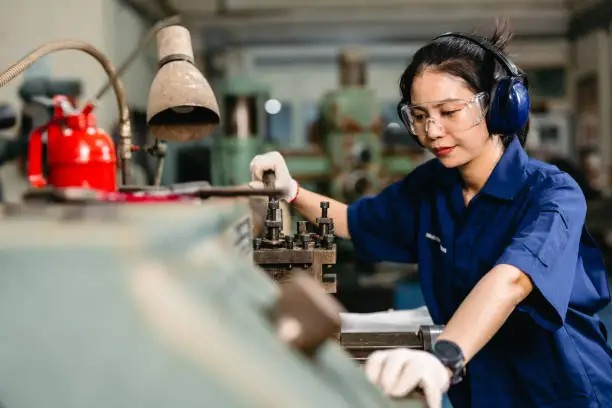- Jul 15, 2025
In today’s competitive manufacturing landscape, speed and precision are paramount. Rapid mold prototyping has emerged as a game-changing solution for industries seeking faster and more cost-effective product development. Through cutting-edge techniques, businesses can now prototype and test new products quickly, leading to faster time-to-market and higher-quality results.
What Is Rapid Mold Prototyping?
Rapid mold prototyping refers to the use of modern manufacturing techniques to quickly create a mold for testing a product prototype. Traditionally, molding processes could take weeks to complete, but rapid prototyping allows companies to create functional prototypes in a matter of days.
These molds are typically made from materials such as silicone, resin, or metal and can be used to create a wide range of parts. With rapid mold prototyping, engineers can test prototypes, refine designs, and gather feedback before committing to full-scale production.
Key Innovations in Rapid Mold Prototyping
The world of rapid mold prototyping is evolving rapidly, with new technologies continually reshaping the industry. Here are some of the most exciting innovations that are making rapid mold prototyping more efficient, cost-effective, and versatile:
1. 3D Printing for Mold Creation
One of the most impactful innovations in rapid mold prototyping is the use of 3D printing technology. Traditionally, mold-making required labor-intensive processes such as milling or casting. However, with 3D printing, designers can now create highly complex molds with intricate details in a fraction of the time.
3D printing provides the flexibility to produce prototypes that would otherwise be impossible or highly expensive to manufacture. This technology reduces lead times, allowing businesses to test their products sooner and make necessary adjustments before committing to production.
Moreover, 3D printing can use a variety of materials, from resins to metal powders, providing flexibility in the types of molds that can be created. Whether you're producing a small plastic part or a more robust metal component, 3D printing can meet your needs.
2. Metal Additive Manufacturing
Metal additive manufacturing is another breakthrough in rapid mold prototyping. In the past, creating metal molds for prototypes required extensive manual work. Now, metal 3D printing allows for the quick creation of metal molds that are both durable and highly accurate. This technique has dramatically reduced the time and cost of producing metal molds for low-volume production and prototyping.
The ability to directly print metal molds also opens up new possibilities in industries such as aerospace and automotive, where parts must meet strict specifications for performance and safety. Metal additive manufacturing allows manufacturers to produce high-quality molds for complex components at a fraction of the cost of traditional machining methods.
3. Silicone Rubber Molding
Silicone rubber molding is a highly flexible and cost-effective method of rapid mold prototyping. Using a silicone-based material, manufacturers can create molds that capture fine details and provide excellent accuracy. This method is particularly useful for low-volume production or prototyping designs that require flexibility in the mold itself.
Silicone rubber molds can be created quickly and are ideal for prototypes that will undergo various testing phases. The material's flexibility allows for easy removal of parts, making it a popular choice for industries like medical device manufacturing and automotive prototyping.
4. Vacuum Casting
Vacuum casting is a method used to produce high-quality prototypes by using silicone molds. After creating the silicone mold, manufacturers pour liquid materials, such as polyurethane or metal, into the mold while applying a vacuum to remove air bubbles. This process ensures a smooth and high-quality finish, ideal for creating parts with complex geometries.
Vacuum casting is particularly useful for creating small quantities of parts, making it a great choice for low-volume production or prototype testing. The technique is fast, cost-effective, and highly accurate, which is why it’s gaining popularity in industries such as electronics and consumer products.
5. Digital Mold Simulation
One of the latest advancements in rapid mold prototyping is digital mold simulation. With this technology, engineers can simulate the molding process on a computer before creating any physical molds. This allows for more accurate predictions of how the material will behave during the molding process, reducing the risk of errors and ensuring a higher-quality final product.
Digital mold simulation helps manufacturers identify potential flaws in the design before production begins. It can also predict issues such as air pockets or uneven material flow, which could cause defects in the final prototype. By using this simulation technology, businesses can streamline their prototyping process and minimize costly mistakes.
6. Hybrid Manufacturing Techniques
Hybrid manufacturing techniques combine traditional and modern methods to create more efficient rapid mold prototyping solutions. For example, companies are now combining 3D printed molds with traditional injection molding. This hybrid approach allows manufacturers to take advantage of the speed and customization of 3D printing while still leveraging the durability and precision of traditional molding methods.
By using a combination of technologies, hybrid manufacturing allows businesses to create molds that meet specific design requirements without the long wait times typically associated with traditional manufacturing methods. This can significantly reduce time-to-market for new products.

Benefits of Rapid Mold Prototyping Innovations
The innovations in rapid mold prototyping offer numerous advantages for manufacturers and product designers. Here are some of the key benefits that businesses can expect from adopting these cutting-edge technologies:
1. Faster Time-to-Market
With innovations like 3D printing, vacuum casting, and metal additive manufacturing, prototypes can be produced in a fraction of the time it takes with traditional molding methods. This enables businesses to move quickly from concept to market-ready products, giving them a competitive edge.
2. Cost-Effectiveness
Traditional prototyping methods often require expensive molds, labor-intensive processes, and long lead times. With rapid mold prototyping, manufacturers can significantly reduce costs by using digital tools and additive technologies. This is especially true for industries that need to create prototypes for low-volume production runs.
3. Higher Precision and Customization
Rapid mold prototyping allows for higher precision than traditional methods. The use of digital mold simulation and 3D printing results in parts that are highly accurate and customizable. Manufacturers can easily modify designs based on feedback, ensuring that the final product meets exact specifications.
4. Flexibility for Complex Designs
New prototyping methods allow for the creation of complex and intricate designs that were previously difficult or impossible to achieve. Whether it’s for aerospace, automotive, or medical devices, rapid mold prototyping provides the flexibility to test and refine complex geometries before mass production.
5. Lower Risk of Errors
By using digital mold simulation and advanced materials like silicone rubber and metal, manufacturers can minimize the risk of errors during the molding process. These innovations ensure that prototypes are made to exact specifications, which helps avoid costly mistakes and revisions later on.
Applications of Rapid Mold Prototyping Innovations
These advancements in rapid mold prototyping have wide-ranging applications across various industries:
Automotive: Rapid mold prototyping allows for faster development of parts like engine components, interior features, and exterior panels, ensuring quicker testing and iteration.
Aerospace: Prototypes of highly complex parts, such as turbine blades and aircraft components, can be created quickly, allowing engineers to meet stringent performance and safety requirements.
Medical Devices: The medical industry relies on precise prototypes for implants, surgical instruments, and custom devices. Rapid mold prototyping ensures accuracy while reducing development time.
Consumer Electronics: With rapid mold prototyping, companies can quickly create prototypes for new electronic products, such as smartphone housings and wearables.
Conclusion
Unlock faster more cost-effective product development with rapid mold prototyping. Get precise, high-quality prototypes in record time. Contact us today to start your project!


